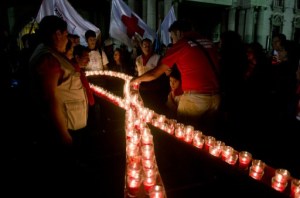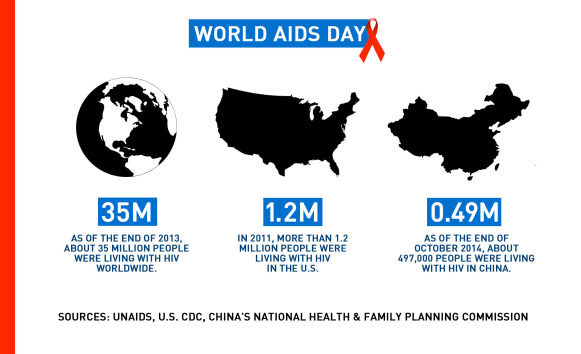UNAIDS, the joint U.N. program on HIV and AIDS, has said that it is possible to end the epidemic as a public health threat by 2030. CCTV’s Wu Guoxiu reported this story from Beijing.
JUMP TO:
1.2 million Americans live with HIV; Many find hope in new treatments
Nations throughout Africa work to reduce HIV/AIDS
“Since 2005, the number of new infections has dropped by 40 percent; the number of AIDS related deaths has dropped by 35 percent. Because more than ever since, antiretroviral were scaled up,” said UNAIDS Country Director Cathrine Sozi. “Those were the good human results that we now seeing that making it possible for governments and global leaders to say there is a possibility that we could end HIV/AIDS by 2030 as a public threat.”
UNAIDS has also set new targets to be achieved by 2020 that include:
* Ensuring that 90 percent of people living with HIV know that they have the virus
* Ensuring that 90 percent of people who know they are HIV-positive are getting treatment
* Ensuring 90 percent of people on treatment have suppressed viral loads so their immune system remains strong and they are no longer infectious.
The major challenge now is societal, UNAIDS leaders said.
“It’s not as if the drugs are not on the shelves, it’s not as if the condoms are not in the warehouses. Stigma and discrimination for me is the biggest barrier for people to access all these huge resources that are there,” Sozi said.
Official figures say 490,000 people are now living with HIV or AIDS in China. 149,000 have died from the disease. But mortality has fallen considerably here since 2005. The drop in mortality has been attributed to free HIV tests for all and free treatment for rural and poor urban citizens. The UN official now stresses the importance of bringing services to people most in need.

 CGTN America
CGTN America Relatives of victims of HIV/AIDS attend a vigil on December 1, 2014 in Guatemala City to mark World AIDS Day. AFP PHOTO/Johan ORDONEZ
Relatives of victims of HIV/AIDS attend a vigil on December 1, 2014 in Guatemala City to mark World AIDS Day. AFP PHOTO/Johan ORDONEZ

